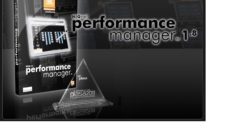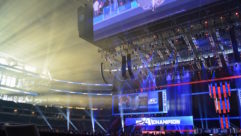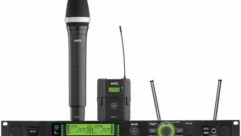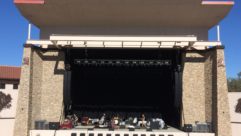
Harman Pro Group HiQnet
Jul 1, 2006 12:00 PM,
By John McJunkin
Control protocol centralizes command of audio systems.
Way back in the good (or bad) old days, we had microphones, mixers, amplifiers, loudspeakers, signal processing, and cabling. And that was it. We hooked it all up, and conveyed sound to people who wanted to hear it.
Then, one day, we got remote control — the ability to make a tweak to an EQ or an amplifier from afar. This was a major development, because it enabled us to avoid certain undesirable things — such as the necessity of physically walking (or running) from front-of-house to stage to adjust devices such as amps. It also eliminated the danger of an inexperienced local crew member misunderstanding your direction via Telex and adjusting an amplifier’s gain to maximum, instead of minimum. Remote control also gave us remote monitoring of our devices’ various levels and states of operation.
Now, Harman Pro has gone a step further with HiQnet, a protocol that integrates a substantial number of Harman products into a single command-and-control network and also handles audio streaming. You no longer need multiple applications on a computer — or even worse, multiple computers — to monitor and control your entire system. HiQnet not only eliminates levels of hardware and software complexity, but also gathers all the pertinent information and control you need into a single user interface. And, for me personally, it’s very easy on my brain to have a little picture showing me the big picture, and to have bits of information about all these devices that constantly update in realtime.
The protocol allows users to “connect, configure, and control” (according to Harman) multiple devices from eight of Harman’s subsidiary organizations, specifically AKG, BSS, Crown, dbx, JBL, Lexicon, Soundcraft, and Studer. It uses serial, USB, and Ethernet connections, and it complies with the Universal Plug and Play (UPnP) standard. That means HiQnet devices automatically and autonomously negotiate HiQnet network IP address assignments among themselves when they are in an Ethernet network.
In 1976, our amps, mixers, speakers, and so forth couldn’t even communicate. Now, they wake up and call each other to establish a network. This is the kind of George Jetson stuff we’ve been waiting for. Additionally, HiQnet can also wrap around third-party networked audio protocols like CobraNet, enabling audio streaming within the network.
SYSTEM ARCHITECT
The HiQnet protocol centers around System Architect, a Windows application that brings all control into a single user interface. Other applications use the HiQnet protocol, as well — London Architect (for use with BSS and Soundweb products), ZonePro designer for commercial applications, and LSR4300 control center, for control and configuration of studio monitors.
For this article, we’ll be focusing on System Architect exclusively. It addresses all of the HiQnet-enabled equipment in a system, including an AKG wireless system, the BSS Soundweb London networked audio distribution system, Crown I-Tech amplifiers and PIP modules, dbx DriveRack 4800/4820 loudspeaker management processors, JBL VerTec DP series powered loudspeakers, and Studer Vista 8 digital consoles.
I had originally downloaded version 1.05 of the System Architect application, but I updated to version 1.10.1 once it became available. Launching the application gave me the Venue View — a broad overview of the various devices in the network. On the left side of the screen are bars marked Crown, dbx, and JBL. Clicking on them gave me a list of various HiQnet-enabled devices currently available.
I commenced building my mock system for a nonexistent venue. I used a dbx DriveRack 4800, eight JBL VerTec VT4888 DP and four VPSB7118 DP subwoofers. The test system could have been ridiculously more sophisticated; HiQnet supports up to 65,536 nodes — significantly more than my chosen 13. I picked powered speakers to contribute to our academic exercise, but with Crown amplifiers available in the network, I could have chosen passive speakers, as well.
Upon completion of the development of the virtual venue, the only remaining thing to do is to connect with the real thing, which would render previously unprecedented levels of control.Double-clicking on any individual device opens a control panel for it, enabling control over literally every single available parameter. It’s very nice to be able to reverse polarity of the mids in the No. 3 box of my left array if I want to, or to increase the compression ratio on the input of the No. 5 box of my right array by 0.1, or to build a group control that allows me to adjust the level or mute the highs on all boxes simultaneously.
Although dbx vastly improved the front-panel user interface of its DriveRack 4800 over the previous 480 version, computer control is still preferable, and again, I can control every parameter of the DriveRack from the computer. Considering HiQnet’s compatibility with the 802.11g wireless standard, I can walk around a venue with a tablet computer, tweaking EQ and/or dynamics, or any other little thing my heart desires. System Architect also enables the development of custom control panels, allowing me to bring all the important controls that I use frequently into one central location, and granting me detailed design capabilities for those panels — very powerful stuff.
Presets are also available. For instance, I could download appropriate settings (including EQ curves, etc.) for the JBL VT4889 loudspeaker, and dial them right up. And obviously in the course of micro-tweaking my system for optimum quality, I can store my own presets. I can also limit the changes that others can make to the system, granting different levels of authority to different individuals.
Having all these devices networked also solves the major issue of firmware updating. Not only can users determine which version each unit has, they can update either all or selected units. This is an enormous time-saver. Imagine a commercial install that features dozens of amps and scores of speakers. I hate to think of the heartburn associated with updating firmware for each unit individually. Luckily, HiQnet eliminates the necessity for this. It also allows for reversion to an older version if a newer one creates problems. Pretty slick stuff. Another great feature is that Harman very wisely presumed that many HiQnet users would be using tablet computers versus standard laptops, so they optimized the system for use with tablets.
Bottom line: Centralized command-and-control of an entire audio system is an idea whose time has come. As systems grow into sprawling, unmanageable behemoths, this notion hits the spot — centralize the control and monitoring of the whole thing. Harman has done it right, and will undoubtedly continue to enhance and improve the system. The extraordinary level of control provided by HiQnet enables engineers, contractors, and integrators alike to provide excellent audio, and keep clients happy.
PRODUCT SUMMARY
Company: Harman Pro North America www.harmanpro.com
Product: HiQnet
Pros: Powerful, all-encompassing control and monitoring of an entire system.
Cons: Software only available for Windows.
Applications: A protocol useful for controlling multiple devices from eight of Harman’s subsidiary organizations.
Price: Free download for use with multiple devices from Harman subsidiaries
SPECIFICATIONS
- Supports:
Ethernet control
USB control
Serial control
CobraNet audio
Up to 64 channels of streaming audio
Sample rates up to 96kHz
Up to 65,536 HiQnet nodes in a single system - Wireless 802.11g compatible
- Optimized for tablet PC use and remote access
- Universal Plug and Play (UPnP) compliant
- Multiple-computer support
John McJunkinis the principal of Avalon Audio Services in Phoenix and consults in both studio commission and live sound applications. He is also a key figure at the renowned Conservatory of Recording Arts & Sciences.










